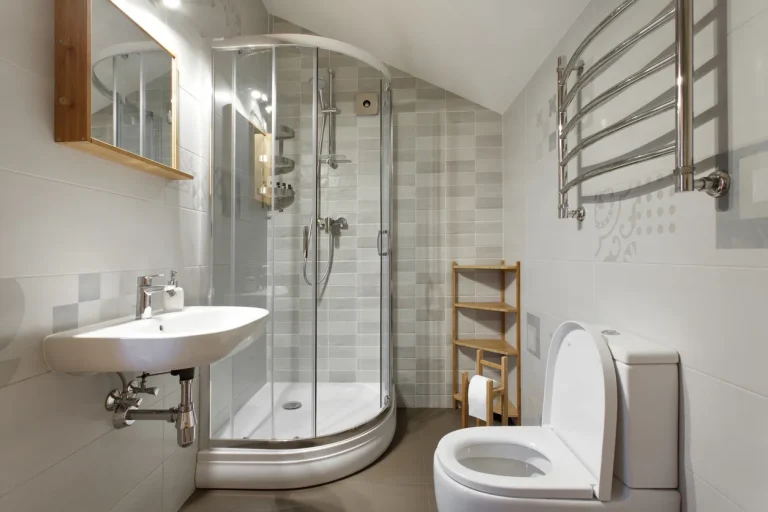
Home improvement projects, whether big or small, often center around creating a more beautiful, functional, and enjoyable living space. However, achieving the desired transformation requires more than just a handful of tools and materials—it requires an understanding of design principles. Interior design is not simply about choosing the right color for the walls or the most stylish furniture. It is about creating a cohesive, aesthetically pleasing environment that reflects your tastes and enhances the functionality of your home.
For those new to home improvement, diving into design can seem overwhelming. Where do you begin? How do you transform your vision into reality? In this beginner’s guide to home design, we’ll walk you through key concepts, tips, and practical advice to help you get started with confidence.
Understanding the Basics of Home Design
Before embarking on any home improvement project, it is essential to understand the foundational elements of design. Home design is a blend of aesthetics and functionality, which means every decision—whether it’s choosing furniture, colors, or layout—should contribute to both the beauty and practicality of the space.
1. The Power of Color
Color is one of the most significant elements in any design scheme. It can influence the mood of a room, make spaces feel larger or smaller, and enhance the overall atmosphere. When choosing colors for your home improvement project, consider the following:
-
Color Palette: Opt for a cohesive color palette that complements each room. Neutral colors like whites, grays, and beiges offer a timeless, sophisticated look, while bolder colors like deep blues, forest greens, or warm golds can add depth and richness to a space.
-
Mood Setting: Colors can set the tone for a room. Soft blues and greens are known to create calm and relaxation, making them perfect for bedrooms or bathrooms. On the other hand, yellows and oranges can bring energy and vibrancy to living rooms or kitchens.
-
Accent Colors: Accents, such as throw pillows, rugs, or artwork, provide an opportunity to experiment with color without overwhelming the space. These elements can introduce complementary or contrasting colors that inject life and personality into a room.
2. Furniture and Layout: Function Meets Aesthetics
A well-designed room is not only beautiful but also functional. Furniture plays a significant role in achieving this balance. Consider both the style and functionality of each piece to create a harmonious environment.
-
Size and Scale: When selecting furniture, think about the scale of the room. Oversized furniture in a small room can make the space feel cramped, while tiny pieces in a large room can look disproportionate. Choose furniture that is appropriately sized for your space to ensure a balanced layout.
-
Flow and Traffic: One of the most important aspects of furniture layout is traffic flow. Ensure that there is enough space for people to move around the room comfortably. Avoid blocking pathways and allow for easy access to doors, windows, and other key areas.
-
Focal Points: Every room should have a focal point—a piece of furniture or an architectural feature around which the rest of the space is organized. In a living room, for example, a fireplace or a piece of artwork may serve as the focal point. Arrange your furniture to emphasize this feature, creating a natural flow within the room.
3. Lighting: The Art of Illumination
Lighting is one of the most powerful design elements in a home. Not only does it serve a practical purpose, but it can also dramatically alter the ambiance of a room. In fact, lighting can make or break a design scheme. There are three main types of lighting to consider:
-
Ambient Lighting: This is the general, overall lighting of a room. It should be soft and even to avoid harsh shadows. Ceiling fixtures, recessed lighting, and overhead pendant lights are common sources of ambient light.
-
Task Lighting: As the name suggests, task lighting is designed to illuminate areas where you need to perform specific tasks, such as reading, cooking, or grooming. Table lamps, desk lamps, and under-cabinet lighting are examples of task lighting.
-
Accent Lighting: Accent lighting is used to highlight certain features of a room, such as artwork, plants, or architectural details. Wall sconces, track lighting, and spotlight fixtures can create visual interest and add depth to the room.
Layering these three types of lighting will create a well-rounded and inviting atmosphere. Dimmer switches are also a good idea, as they allow you to control the intensity of the light to suit different moods and activities.
4. Texture and Materials: Creating Depth and Interest
The texture and materials you choose can add richness and warmth to a room. Mixing various textures—such as wood, metal, fabric, and glass—creates visual interest and prevents a room from feeling flat or monotonous.
-
Natural Materials: Incorporating natural materials like wood, stone, and cotton can create a sense of comfort and timeless appeal. Wooden floors, stone countertops, and linen upholstery lend a tactile, earthy quality to a room.
-
Contrasting Textures: Pairing contrasting textures adds dimension. A leather chair with a soft fabric throw, or a glass table with a plush rug underneath, can create a balanced and engaging space.
-
Patterns and Fabrics: Use fabrics and patterns strategically to introduce layers of design. A patterned rug or throw pillow can add color and style to a neutral room. Keep in mind that too many competing patterns can overwhelm the space, so it’s best to balance bold patterns with solid colors.
Designing with a Purpose
Once you understand the basic design principles, it’s time to think about the specific purpose of the room. Whether it’s a cozy living room, a functional kitchen, or a tranquil bedroom, the design should support the room’s intended function. Consider the following:
-
Functionality: The primary purpose of home design is to create a space that works for you and your family. For instance, a family room might need to accommodate both relaxation and entertainment, requiring comfortable seating and sufficient storage for toys, books, or media equipment.
-
Personal Style: A home should reflect your personal taste and lifestyle. Whether you prefer modern, minimalist, traditional, or eclectic design, it’s important to create a space that makes you feel comfortable and happy. Infuse your personality into the design by incorporating meaningful artwork, heirloom furniture, or personal accessories.
-
Balance and Harmony: A well-designed room feels balanced and harmonious. This doesn’t mean everything has to be perfectly symmetrical, but there should be a sense of equilibrium between colors, furniture, and decor. Balance can be achieved through thoughtful placement and the use of scale, proportion, and rhythm.
Budgeting for Home Design
One of the most important aspects of any home improvement project is budgeting. Design projects can quickly become costly, especially when you factor in materials, furniture, and professional services. However, there are ways to achieve a stylish look without breaking the bank.
-
Prioritize: Identify your most important design goals and prioritize them. Do you need new furniture, or is the lighting the biggest concern? Focusing on key areas will help you allocate your budget more effectively.
-
DIY vs. Professional Help: Some home improvement projects, like painting or arranging furniture, can be done on your own, saving money. However, for more complex tasks such as electrical work, plumbing, or custom cabinetry, it’s wise to hire a professional. Doing so will ensure the job is done right and avoid costly mistakes in the long run.
-
Shop Smart: Look for sales, discounts, and second-hand items. Vintage shops, online marketplaces, and outlets can offer unique and budget-friendly furniture and decor options. Additionally, refinishing or reupholstering old furniture can give it new life at a fraction of the cost of buying new.
Conclusion
Home improvement is a rewarding journey, and design is at the heart of it all. By understanding basic design principles such as color, furniture layout, lighting, and texture, you can create spaces that are not only visually appealing but also functional and enjoyable to live in. Remember, design is a personal experience—your home should be a reflection of who you are and what makes you feel at ease. Take your time, plan carefully, and trust your instincts, and you’ll be well on your way to transforming your home into a beautiful haven.





